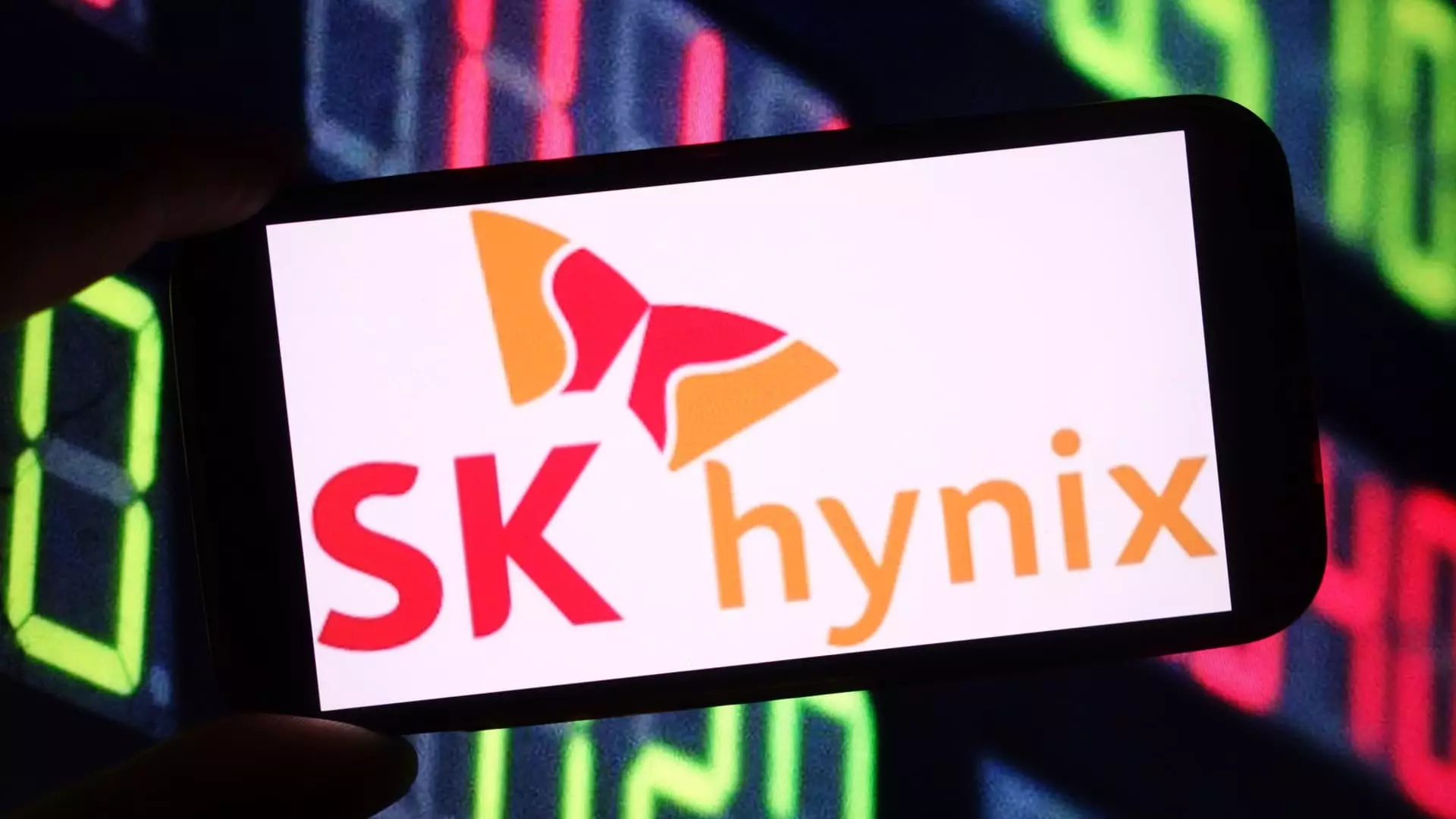In a compelling display of resilience and innovation, SK Hynix has just reported astonishing first-quarter earnings that not only exceeded market expectations but also showcased the firm’s pivotal role in the burgeoning artificial intelligence (AI) landscape. With a revenue of approximately 17.64 trillion won (around $12.36 billion), SK Hynix’s results comfortably surpassed estimates of 17.26 trillion won, reflecting a dramatic year-on-year growth of 42%. This impressive revenue growth is complemented by a staggering 158% increase in operating profit, reported at 7.44 trillion won compared to last year. Such statistics underscore SK Hynix’s strategically placed pedestal in the memory chip sector.
However, it would be amiss not to point out the potential red flags for the semiconductor powerhouse. Despite this remarkable quarter, a sequential decline in revenue and operating profit of 11% and 8% respectively from the previous quarter hints that the exuberance may face obstacles in the coming months. The company’s executives have expressed valid concerns about the broader economic landscape, particularly the influence of U.S. tariff policies on market stability. As a leader in dynamic random access memory (DRAM) production, SK Hynix understands that its health is intimately tied to global trade dynamics, which could potentially disrupt demand as year-end approaches.
The AI Wave: Driving Unprecedented Demand
On a more optimistic note, the genuine excitement around AI has laid fertile ground for significant growth in memory chip requirements, especially in high bandwidth memory (HBM). A profound transformation across the tech industry is evident, driven by AI functionalities which are being integrated into consumer electronics, including PCs and smartphones. As SK Hynix prepares to capitalize on the latest product launches that harness AI advancements, it’s clear that the company is strategically aligning itself with the future of technology.
The concept of “sovereign AI projects” adds another layer of intrigue to the ongoing developments within the AI ecosystem. SK Hynix highlights that the decreasing costs associated with AI development have stimulated a surge in initiatives across the globe, ultimately leading to a pronounced uptick in demand for memory solutions. Notably, the firm has recognized DeepSeek’s open-source R1 reasoning model as a pivotal moment during the quarter, showcasing a significant leap in competitive performance with minimal hardware dependency. Such innovations are a testament to the innovative spirit that firms like SK Hynix embody as they navigate this new terrain.
Market Leadership and Competitive Landscape
With current market projections placing SK Hynix atop the HBM sector, boasting a 70% revenue share as highlighted by Counterpoint Research, the firm’s leadership is irrefutable. Yet, competition remains fierce with heavyweights like Micron Technology and Samsung Electronics also vying for dominance in this lucrative segment. As the demand for high-performance memory chips surges, SK Hynix will need to continue to innovate and adapt its strategies to ward off challenges posed by its rivals.
The company’s partnership with renowned entities such as Nvidia underscores its essential role in the AI server segment. As AI technologies become increasingly integral to modern enterprises, the demand for superior memory solutions is projected to escalate. Thus, the company’s continued investment in R&D and ability to rapidly adapt to market needs will be decisive factors that either maintain or widen its current lead.
The Ominous Cloud of Economic Volatility
Despite the robust momentum and optimism generated by ongoing developments in the AI sector, SK Hynix’s leadership is keenly aware of the lurking threats. The possibility of reviving tariff measures creates an air of uncertainty that could stifle demand in critical markets, dampening the otherwise bright outlook shared by many within the technology landscape. The executive team’s caution serves as a reminder that while the current trajectory appears favorable, external factors must continuously be monitored and factored into both short-term strategies and long-term planning.
As SK Hynix flourishes in the AI memory market, the delicate balance between thriving growth potential and looming economic risks will be a crucial narrative to follow in the succeeding quarters. The company’s ability to navigate this complexity will determine not only its own future success but may also serve as a bellwether for the wider semiconductor industry. The looming question remains: can SK Hynix continue this remarkable rise amid the potentially volatile backdrop of global trade and AI advancements?

